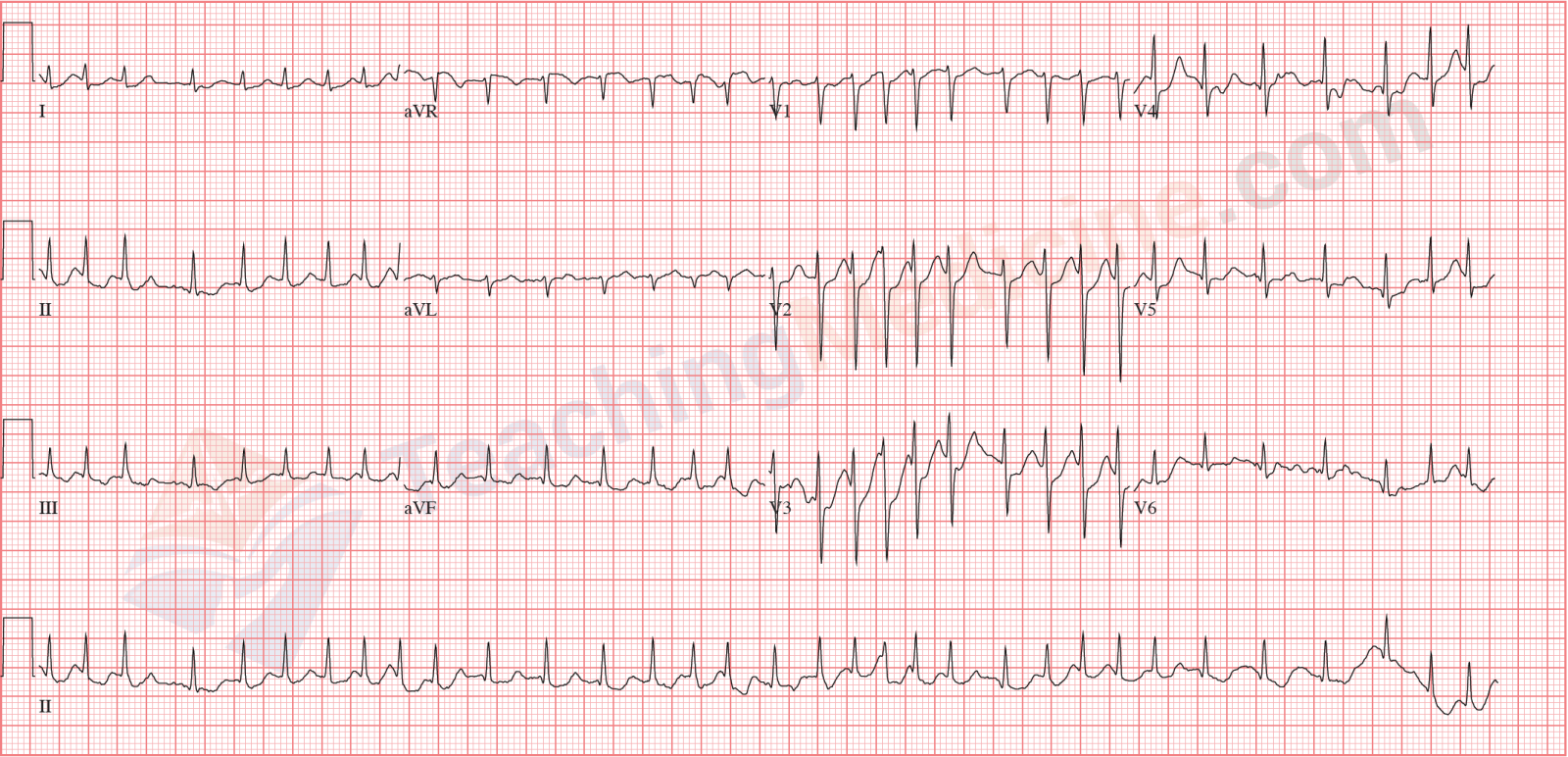2 min read - Thyrotoxicosis
Scenario
An elderly lady presented with a history of feverish feeling for one week duration on a busy casualty night. She had taken treatment once from a GP without an improvement.
She complained of aches, pains and fatigue. She complained of a mild on and off cough. There was no chest pain, urinary symptoms, vomiting or diarrhoea.
On examination she was a thin built lady, who appeared anxious. Her pulse rate was 110/min. Blood pressure was 140/100mmHg. Lungs were clear and abdominal examination was normal.
House officer made the diagnosis of a possible respiratory tract infection and started her on paracetamol, piriton, nebulization SOS with salbutamol and oral coamoxyclav.
During the morning ward round the house officer noticed the patients pulse was 170/min. He immediately attached the patient to the monitor and called the SHO. The monitor showed atrial fibrillation.
Diagnosis?
Thyrotoxicosis with AF precipitated by salbutamol nebulization.
Lesson
- Thyrotoxicosis is a common illness which sometimes is difficult to diagnose.
- Elderly patients sometimes present with vague symptoms like feverish feeling and loss of weight.
- Consider thyrotoxicosis in any patient who appear wasted, anxious, tremulous and sweaty. They can have various tachyarrhythmias including atrial fibrillation. Sometimes diarrhoea may be the only presentation.
- Thyrotoxic crisis is a life threatening emergency
- They can also develop life threatening other complications like atrial fibrillation.
Home work!
Read


An elderly lady presented with a history of feverish feeling for one week duration on a busy casualty night. She had taken treatment once from a GP without an improvement.
She complained of aches, pains and fatigue. She complained of a mild on and off cough. There was no chest pain, urinary symptoms, vomiting or diarrhoea.
On examination she was a thin built lady, who appeared anxious. Her pulse rate was 110/min. Blood pressure was 140/100mmHg. Lungs were clear and abdominal examination was normal.
House officer made the diagnosis of a possible respiratory tract infection and started her on paracetamol, piriton, nebulization SOS with salbutamol and oral coamoxyclav.
During the morning ward round the house officer noticed the patients pulse was 170/min. He immediately attached the patient to the monitor and called the SHO. The monitor showed atrial fibrillation.
Diagnosis?
Thyrotoxicosis with AF precipitated by salbutamol nebulization.
Lesson
- Thyrotoxicosis is a common illness which sometimes is difficult to diagnose.
- Elderly patients sometimes present with vague symptoms like feverish feeling and loss of weight.
- Consider thyrotoxicosis in any patient who appear wasted, anxious, tremulous and sweaty. They can have various tachyarrhythmias including atrial fibrillation. Sometimes diarrhoea may be the only presentation.
- Thyrotoxic crisis is a life threatening emergency
- They can also develop life threatening other complications like atrial fibrillation.
Home work!
Read
- What are the physical signs of thyrotoxicosis?
- How to diagnose hyperthyroidism?
- What are the treatment options for thyrotoxicosis?




Comments
Post a Comment